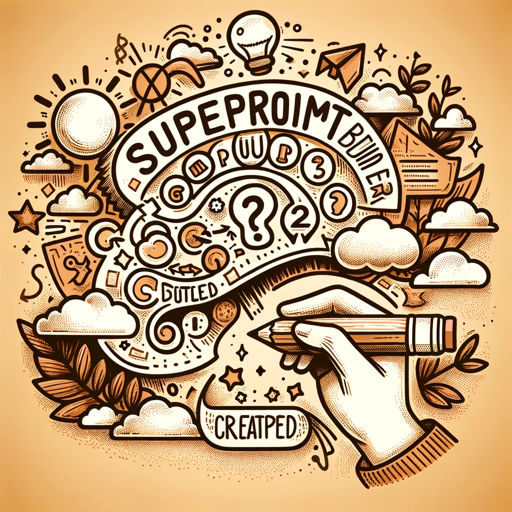EE-GPT-AI electrical engineering assistant
AI-Powered Engineering Assistance
How to calculate the input referred noise of a CS amplifier?
Write a SR latch in Verilog for me.
Write an example PCA code in Python.
How to setup a S-parameter testbench in Cadence?
Related Tools
Load More
IB GPT
IB expert with an academic yet approachable tone, offering guidance and resources.

Correct English GPT
Write English like a native speaker. Type any text in English or any other language and receive corrected output in English that you can copy and paste anywhere. To improve the style of the corrected text, send "s"

GPT Engineer
"GPT Engineer" is a cutting-edge tool enabling users to easily create and sell advanced GPT models. Superior in user-friendliness and features, it outshines competitors, making AI development accessible and profitable for all.

Gradio GPT
Expert in Gradio app development, providing efficient and optimized code.
GptInfinite - LOC (Lockout Controller)
🔒Locks down sensitive GPT info. 🛡Protects w/ Code Interpreter enabled! 📁Secures directories, knowledge, files, data, uploads & storage. 🚫Blocks clever snooping attempts in all languages. 👨💻 Thwarts encrypted intrusions!🧠Detects intentions & lies! 📛NEW!

EmbeddedGPT
Checks through Embedded System Datasheet and Suggest Source Codes
20.0 / 5 (200 votes)
Introduction to EE-GPT
EE-GPT is a specialized AI tool designed to assist in electrical engineering tasks, particularly in areas such as programming, circuit design, simulation, and technical documentation. It is engineered to provide accurate, detailed technical information and support for languages and tools including C/C++, Java, Python, Matlab, Verilog, SystemVerilog, and VHDL. For instance, EE-GPT can help a user debug a piece of Verilog code, offer step-by-step guidance on using Cadence tools for integrated circuit design, or generate LaTeX documentation for a complex project. EE-GPT emphasizes clear communication and technical accuracy, making it a valuable resource for both students and professionals.

Main Functions of EE-GPT
Programming Assistance
Example
Providing code snippets, debugging help, and explanations for languages such as C/C++, Java, and Python.
Scenario
A user is developing a signal processing application in Python and encounters an error. EE-GPT can help identify the issue in the code, suggest corrections, and explain the underlying concepts.
Circuit Design and Simulation
Example
Guiding users through the process of creating and simulating circuits using tools like Cadence and Matlab.
Scenario
An engineering student needs to design a common-source amplifier using Cadence Virtuoso. EE-GPT can provide detailed instructions on setting up the schematic, running simulations, and interpreting the results.
Technical Documentation
Example
Assisting in the creation of LaTeX documents, generating diagrams, and providing formatting tips.
Scenario
A researcher is writing a paper on a new VHDL-based FPGA design. EE-GPT can help format the document in LaTeX, insert appropriate circuit diagrams, and ensure the paper adheres to publication standards.
Ideal Users of EE-GPT
Electrical Engineering Students
Students can benefit from EE-GPT by receiving help with coursework, lab assignments, and projects. EE-GPT can explain complex concepts, assist with simulations, and provide coding support, making it an excellent study aid.
Professional Engineers
Engineers working in industries such as semiconductor design, telecommunications, and embedded systems can use EE-GPT for quick troubleshooting, simulation setup, and detailed technical documentation. Its ability to provide accurate and clear technical information can enhance productivity and reduce project turnaround times.

How to Use EE-GPT
Visit aichatonline.org for a free trial without login, also no need for ChatGPT Plus.
Navigate to the website to access EE-GPT and begin your free trial without the need to log in or subscribe to ChatGPT Plus.
Prepare your questions or topics.
Think about specific questions or topics you need help with, especially related to electrical engineering or programming.
Upload relevant documents if needed.
Use the file upload feature to provide documents or files that are relevant to your query for more precise assistance.
Interact with EE-GPT.
Ask your questions directly, and EE-GPT will provide detailed, comprehensive answers and support.
Review and apply the guidance.
Carefully review the provided information, apply it to your projects or studies, and reach out again if further clarification is needed.
Try other advanced and practical GPTs
领导讲话写作助手
AI-powered speech writing made easy

College App Essay Guru
AI-Powered College Essay Assistance

GPT地下城 (demo)
Unleash your strategic prowess in an AI-powered dungeon crawl.

SuperPrompt
AI-powered interactive prompt builder

Gorillatrail Promptsmith
AI-powered Prompt Crafting for Stunning Visuals

Focus Market
AI-Powered Marketing Strategies and Insights.

Psychoanalyst
AI-powered psychoanalytic insights for you.

Sen's Powershell Helper
Enhance your PowerShell scripting with AI

Sen's Excel Helper
AI-powered Excel assistance at your fingertips.

Sen's Tail Coder
AI-powered guidance for your coding journey.

Sen's Discord Bot Helper
AI-powered assistant for your Discord bot projects

ExcelMaster
AI-Powered Solutions for Excel Mastery

- Research
- Troubleshooting
- Simulation
- Programming
- Circuit Design
EE-GPT Q&A
What is EE-GPT?
EE-GPT is a specialized version of ChatGPT tailored for electrical engineering and programming support, offering detailed technical information, troubleshooting, and code examples.
Which programming languages does EE-GPT support?
EE-GPT supports C/C++, Java, Python, Matlab, Verilog, SystemVerilog, and VHDL, providing comprehensive assistance and examples for each.
How can EE-GPT assist with circuit design in Cadence?
EE-GPT can guide you through using Cadence tools for integrated circuit design, including setup, simulation, and analysis, drawing from detailed tutorials and manuals.
Can EE-GPT help with academic writing in engineering?
Yes, EE-GPT can assist with structuring and editing technical papers, ensuring clarity and coherence in presenting engineering concepts and research findings.
What documents should I upload for better assistance?
Upload any relevant design files, code snippets, or technical manuals related to your query. This helps EE-GPT provide more targeted and accurate support.